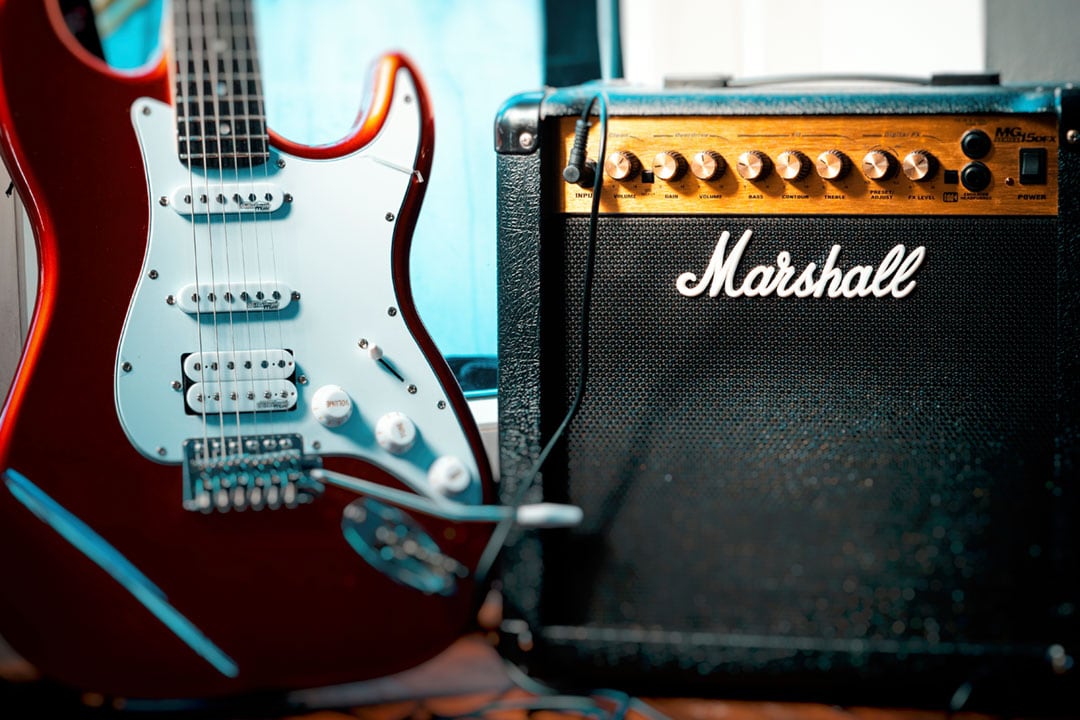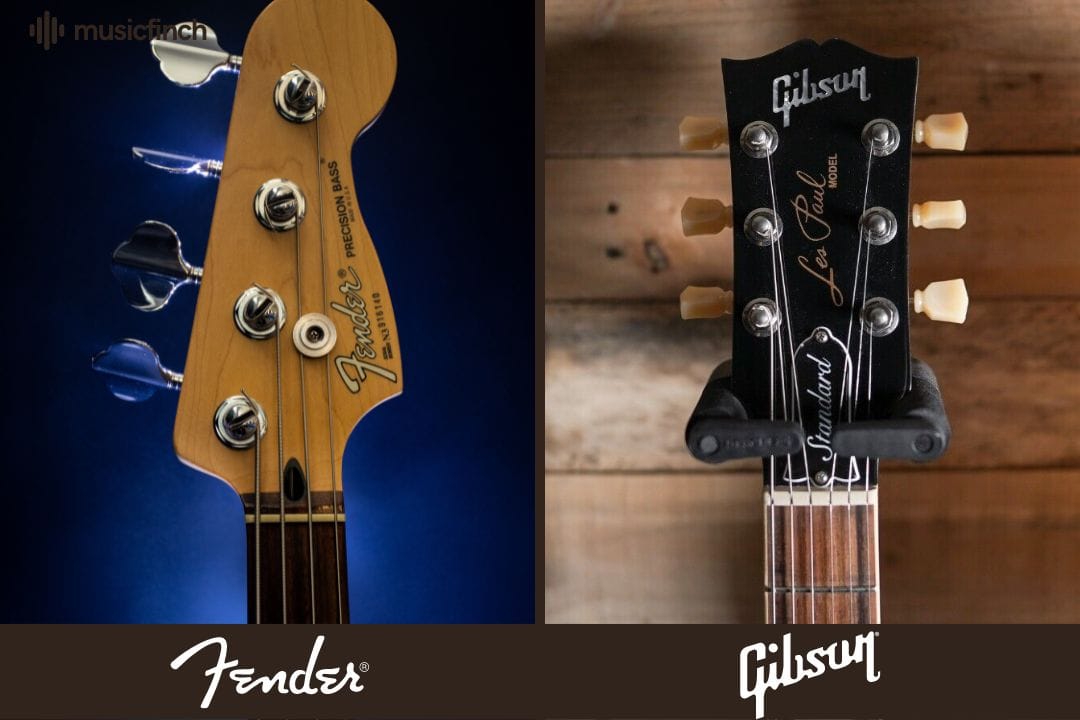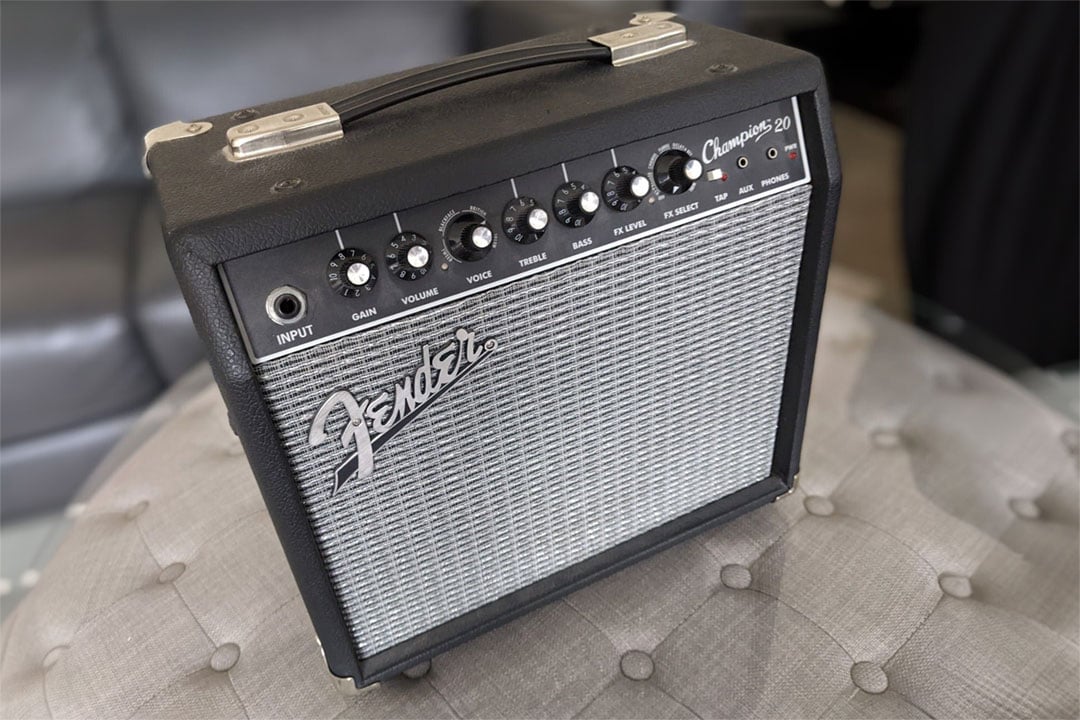You will face a crucial decision after acquiring a Fender Stratocaster–selecting an appropriate amplifier.
This article explores some of the best amplifiers to complement the Fender Stratocaster’s tonal capabilities.
| Amplifier | Type | Wattage | Weight | Features | Recommended for | Ideal Use |
|---|---|---|---|---|---|---|
| Fender Blues Junior IV | Tube | 15 watts | 31 pounds | EL84 power tubes, spring reverb, fat switch, 3-band EQ | Vibrant, slightly gritty sounds; portable | Club gigs and studio work |
| Vox AC30C2 | Tube | 30 watts | 70.99 pounds | Two channels, top boost, classic Vox chime | Distinctive tone, fills up mids; classic Vox chime | Live performances |
| Marshall DSL40C | Tube | 40 watts | 50.5 pounds | Clean and overdrive channels, power scaling (40 to 20 watts) | Classic rock and blues; dynamic overdrive | Rock and blues music in live and studio settings |
| Revv D20 | Tube | 20 watts | 9 pounds | Built-in speaker load and emulation, American-style sound | Light break-up, robust American sound; portable | Home studios and direct recording |
| Fender ’65 Princeton Reverb | Tube | 15 watts | 34 pounds | 6V6 valves, built-in reverb and vibrato, Jensen Alnicos | Bright, crisp sound; classic tones with reverb and vibrato | Studio recording and small venues |
| Fender ’65 Deluxe Reverb | Tube | 22 watts | 42 pounds | 6V6 power tubes, rich clean tones to light overdrive | Rich, clean tones; dynamic range balance | Professional use in live and studio environments |
| Mesa Boogie California Tweed | Tube | Variable (up to 40 watts) | 36.6 pounds | Tube-driven reverb, deluxe reverb with more headroom | Clean tones, overdrive; deluxe reverb with greater volume | Wide range of tones in live and studio settings |
| Boss Katana 50 | Solid-State | 50 watts | 25.57 pounds | Multiple effects, wide sound variety, affordable | Wide sound variety; entry-level, affordable | Practice and small gigs, versatile on a budget |
1. Fender Blues Junior IV

The Fender Blues Junior IV is a fantastic match for a Stratocaster. It employs EL84 power tubes for a vibrant yet round sound and gets slightly gritty when pushed.

With built-in spring reverb, fat switch, and 3-band equalizer, this amp can refine your tone to reach the desired sound.
This compact amp weighs only 31 pounds, making it portable and perfect for gigs.

- Pure Tube Tone in a Compact Package: The Fender Blues Junior IV packs a full tube sound, complete with a Celestion A-Type speaker for clear, warm tones, into a 15-watt amp ideal for home and gig use.
- Versatile Sound with Simple Controls: Achieve everything from crystal-clear cleans to rich, fat overdrives thanks to the amp’s easy-to-use features, including a fat switch for extra depth and an intuitive volume-gain interaction for dynamic sound shaping.
- No Upgrade Required: Comes ready with a high-quality Celestion speaker, ensuring great sound from the get-go. Its brightness is adjustable via the treble control, making it adaptable to any player’s preference without needing modifications.
Recommended settings for the Fender Blues Junior IV with a Stratocaster:
– Volume: 6
– Treble: 6
– Bass: 5
– Middle: 5
– Reverb: 3
– Master: 5
2. Vox AC30C2

The Vox AC30 is another great amplifier choice known for its 30-watt tube combo and two channels that offer a distinctive tone with a Stratocaster.
Its top boost channel lends more gain and overdrive, while maintaining that classic Vox chime.

- Superior Sound Quality: The Vox AC30, with its two Celestian greenback speakers, outperforms its counterparts, including the blue speaker version and hand-wired models.
- Features for Customization: This amplifier offers a two-channel setup with a unique daisy-chaining option for added dirt and crunch. Its top boost channel, complete with EQ customization, is favored for its superior sound compared to the normal channel.
- Built-In Reverb and Tremolo: The AC30 boasts a Reverb quality comparable to high-end amps and an onboard tremolo that surpasses most pedals..
The AC30 is perfect for Strats due to its unique tone filling up the mids, which explains why the Vox AC30 has been a long-time favorite for Stratocaster players.
Recommended settings for the Vox AC30 with a Stratocaster:
– Normal Volume: 6
– Top Boost Volume: 6
– Treble: 6
– Bass: 5
– Reverb Tone: 3
– Reverb Level: 3
Marshall DSL40C

Ah, the Marshall DSL40C and a Stratocaster—now that’s a combo that sings classic rock and blues like few others.

- Versatile Tone Range: Wide range of tones, from clear, crisp cleans to heavy, distorted sounds.
- Intuitive EQ and Channel System: The amplifier features an innovative EQ system that works seamlessly with its four channels (two classic gain and two ultra gain), allowing for easy tone shaping without the need to adjust settings when switching channels constantly.
- Quality Speaker and Power Options: Equipped with a Celestion V-type speaker known for its robust sound and durability, the DSL 40 C delivers a powerful auditory experience. The amp’s power attenuation switch, offering 20 and 40-watt modes, caters to different playing environments, from intimate home sessions to louder gig settings.
Here’s why I’d nudge you towards that Marshall DSL40C for your Strat:
- The Clean Channel is Heavenly: The DSL40C’s clean channel perfectly matches the Strat’s crisp, clear tones. Whether you’re channeling your inner Clapton or just noodling around with some clean blues licks, this amp brings out the Strat’s character beautifully. It’s warm, detailed, and has just the right amount of brightness to complement those single-coil pickups.
- Dynamic Overdrive: Stratocasters are known for their versatility, and the DSL40C’s overdrive channel respects that fully. This amp can cover various sounds, from slight grit to full-on rock distortion. The DSL40C provides a responsive, dynamic overdrive that reacts to your playing intensity and volume knob adjustments on the Strat, giving you a lot of expressive potential.
- Power Scaling is Handy: The DSL40C has a power scaling feature, allowing you to dial down the wattage from 40 to 20 watts. This means you can get those power amp tubes cooking at lower, more manageable volumes—perfect for home or studio use. You get all the tonal benefits of a cranked tube amp without the neighbors knocking.
- It’s Just Classic: There’s something about the look and sound of a Marshall stack that screams rock and roll. The DSL40C, paired with a Stratocaster, with its classic Marshall aesthetics and tone, is like stepping into a time machine and grabbing a piece of guitar history. Whether you’re covering Hendrix or dreaming up your riffs, this setup has an undeniable vibe.
3. Revv D20 Amp head

Weighing only 9 pounds, the Revv D20 is a dynamo of a 20-watt tube head powered by 6V6 power tubes.
It includes a built-in speaker load and emulation, which lets you select your emulation and run the amp without a real cabinet.
The light break-up possible via the pulled-out gain knob makes it stand out with Stratocaster and single-coil pickups.

- Versatile and Portable Tube Amp: The Revv D20 shines as a compact, lightweight tube head with a Fender-like clean sound, ample headroom, and a charming overdrive at the edge of breakup. Its unique pull function on the gain control and power scaling down to 4 Watts make it perfect for home practice and gigs.
- Innovative Recording Features: Designed primarily for home recording, the D20 boasts a built-in reactive load box with editable Two Notes cabinet simulations, allowing for virtually silent recording. The versatility extends with power amp simulation options and direct USB programming, making it a powerhouse for studio work.
- Live Performance Ready: With enough volume to keep up with drummers and a direct output for front-of-house connections, the D20 is ideal for live use, ensuring minimal stage volume and maximum sound quality. Its dual-use capability allows for playing through a cab while simultaneously sending a direct signal for recording or front-of-house mixing.
The Revv D20 brings a robust American-style sound, complimenting the bright yet full tones from the Stratocaster.
Recommended settings for the Revv D20 with a Stratocaster:
– Bass: 9
– Middle: 6
– Treble: 5
– Volume: 7
– Gain: 4 (pulled out)
Fender 65 Princeton Reverb

The ’65 Princeton Reverb and Deluxe Reverb amps are my top picks for anyone rocking a Stratocaster.
First, the match-up between the Strat’s bright, crisp sound and these amps’ clean to warm tones is stellar.
They’re loaded with 6V6 valves, which is a big deal because they churn out a rich and melodious sound, really doing justice to the Strat’s single-coil pickups.

- Pure Valve Tone: The 6V6 valves deliver warmth and clarity, adapting seamlessly to your playing style for a rich, articulate sound.
- Built-in Reverb and Vibrato: Access the classic sounds of reverb and vibrato directly from the amp, adding depth and texture to your music without extra gear.
- Proven Durability: With a design that’s stood the test of time, this amp is as reliable as iconic and has been trusted by musicians for generations.
They were made for each other, bringing out the best in the Strat’s natural sound without overpowering its unique vibe.
And then there’s the effects – the built-in reverb and vibrato. These aren’t just any effects; they’ve left their mark on music history, heard on countless tracks from the golden Motown era right up to today’s hits.
For a Strat player, you can dial in those legendary tones straight from the amp, no pedals required.
Plus, the speakers – Jensen Alnicos – are the secret sauce, ensuring every nuance of your playing comes through, maintaining that clarity and depth no matter where you take your sound.
And let’s not forget, these amps have been the backbone for so many iconic tunes since the ’60s, proving repeatedly that they’re a perfect match for the Strat.
Whether you’re into blues, rock, or anything else, and love your Strat, these amps are a no-brainer.
4. Fender 65 Deluxe Reverb

The Fender 65 Deluxe Reverb icon offers rich, clean tones to light overdrive when pushed.
It’s powered by 2 6V6 power tubes, possibly the perfect pairing with a Stratocaster guitar.

- Authentic Fender Tone: Equipped with a Jensen C12K speaker and six V6 output tubes, the Fender Deluxe Reverb delivers a classic, bright Fender sound, perfect for achieving a retro audio feel.
- Dynamic and Versatile: With its easily adjustable volume and vibrato channel, this amplifier caters to various playing styles, offering clean to classic rock tones, suitable for both studio and live settings.
- Durable with Modern Features: This tube-based amp combines long-lasting build quality with modern conveniences like a reverb and vibrato footswitch, blending vintage sound with contemporary functionality.
The Deluxe Reverb is famed for its pleasing tones and dynamic range balance.
Recommended settings for the Fender 65 Deluxe Reverb with a Stratocaster:
– Volume: 7
– Treble: 6
– Bass: 5
– Reverb: 3
– Speed: 6
– Intensity: 5
5. Mesa Boogie California Tweed

The Mesa Boogie California Tweed provides excellent clean tones, overdrive, and more.
It pairs well with a Strat and offers a tube-driven reverb, reminding many players of a deluxe reverb with greater headroom and volume.

- Patented Multi-Watt Power Selection: The Mesa Boogie California Tweed offers a unique power selection feature, allowing you to switch between 40 watts to 2 watts, enabling a vast range of sounds and volumes. This flexibility is perfect for achieving power amp clipping at lower volumes or exploring different tonal characteristics without sacrificing quality.
- Versatile Tone with Tube Configuration: Experience the sonic diversity with five power modes, each reconfiguring the tubes to switch between brighter, punchier tones at higher wattages and smoother, warmer sounds at lower settings. This amp caters to a wide array of musical needs, from clean headroom for pedals to rich, overdriven sounds.
- Deep Reverb and Traditional Layout: Despite its traditional single-channel design without foot switching, the California Tweed incorporates lush reverb, a feature not commonly associated with tweed circuits but essential for blues and more. Along with padded input for increased headroom, this amp delivers classic sounds suitable for a variety of styles.
6. Boss Katana 50 MKII

The Boss Katana 50 is a 50-watt solid-state combo, best known for its wide sound variety and multiple effects.
It’s an affordable choice, making it perfect for those seeking a more economical amplifier for their Stratocaster.


- Affordable Versatility: The Boss Katana 50 Mk II offers professional-grade versatility at an unbeatable price, making it an ideal choice for guitarists of all levels seeking quality tones and effects without breaking the bank.
- Wide Range of Sounds: Equipped with multiple amp models and effects, this amp accommodates any playing style, from electric to acoustic, providing a broad sonic palette in a single unit.
- Easy Customization: With the Boss Tone Studio, users gain total control over their sound, allowing for precise adjustments and personalization, ensuring the Katana 50 Mk II is not just an amp but a comprehensive sound solution for practice, recording, and performance.
Recommended settings for the BOSS Katana 50 with a Stratocaster:
- lead, gain (50)
- bass (50)
- mid (40)
- treble (50)
- t-scream (5)
- guitar sim (5)
- reverb/tape echo (15)
- modern cab (50)
In My Opinion
As a Stratocaster player, I had the opportunity to test the amplifiers above. If I were to pick one, my favorite would be the Fender Blues Junior IV.
The richness of tone and the punch it delivers has never failed to impress me. It breathes life into my performances and creates a vibe akin to the classic blues and rock spirit.
I’ve found that the grit it renders when pushed, paired with the Strat’s creamy tones, results in a fantastic blend that’s hard to resist.
However, the Vox AC30 becomes my go-to amp when my music leans toward clean tones and chime-like sounds.
It complements the Strat’s single-coil pickups remarkably, providing a clean, ringing tone that’s become a trademark of many of my performances.
The Boss Katana 50, though primarily considered an entry-level amp, surprised me with its robustness.
Its range of tones and affordability truly make it an amp that punches above its weight class. It’s an amplifier I would certainly suggest to beginners with a Stratocaster and a budget.
Choosing the right type of amplifier for your strat
Several characteristics are important when choosing an amplifier, especially for a specific guitar like a Fender Stratocaster.
However, one of the most crucial characteristics is the Type of Amplifier (Tube, Solid-State, Hybrid, or Modeling).
This characteristic is fundamental because it greatly influences the amp’s tone, responsiveness, and overall sound, essential for matching the amp to your guitar and playing style. Here’s why the type of amplifier is so pivotal:
- Tube Amplifiers: Known for their warm, rich tones and natural overdrive, purists and professionals often favor tube amps for their dynamic response to playing nuances. They’re particularly prized for their harmonic complexity and how they can enhance a Stratocaster’s inherent qualities, especially in genres like blues, rock, and jazz.
- Solid-State Amplifiers: These amps use transistor circuits and are known for their reliability, consistency, and often more affordable prices. They can produce clean tones well and generally have a brighter, sharper sound than tube amps. Solid-state can be a great choice for guitarists who value durability and a clear tone, especially for practice or certain genres like pop or funk.
- Hybrid Amplifiers: Combining tube and solid-state technologies, hybrid amps offer the best of both worlds—the warm tone of tubes for the preamp section with the reliability and power efficiency of solid-state in the power amp section. This could be an excellent option for players looking for a balance between tube warmth and solid-state reliability.
- Modeling Amplifiers: Utilizing digital processors, modeling amps can emulate the sounds of various tube, solid-state, and hybrid amps, along with effects and speaker cabinets. For players who desire versatility and the ability to mimic multiple amp types without needing several physical units, modeling amps are incredibly appealing. They’re great for experimenting with different sounds or for playing different styles of music.
Understanding the type of amplifier that suits your needs can guide you to the right amp that not only complements the sound of your Stratocaster but also supports your musical expression and style.
This characteristic influences the amp’s performance in live settings, recording environments, and personal practice, making it a foundational aspect to consider during your selection process.
Related Questions
What type of amplifier works best for the unique sound of a Fender Stratocaster?
The Fender Stratocaster pairs well with a wide range of amps, but you may want to consider a tube amplifier for the best results.
Tube amplifiers like the Fender ’65 Deluxe Reverb are known for their warm, dynamic, and natural-sounding tone.
Its sound can enhance the Stratocaster’s tonal strengths, particularly its bright and clear sound.
Tube amps add harmonic complexity to the notes, making it an ideal choice to ensure a rich, full-bodied tone.
How important is the amp’s power and size when choosing the amp for a Fender Stratocaster?
The amp’s power and size are critical factors when picking an amp for your Fender Stratocaster. Smaller wattage amps, like the Fender Blues Junior IV, can give you that coveted rich, tube-powered tone at lower volumes spaces like small gigs or home studios.
In contrast, larger, higher-wattage amps, such as the Fender Twin Reverb, are suited for larger venues and provide much more clean headroom.
However, consider the venue size and the sound you want to deliver. For instance, a high-wattage amp would be more suitable if you want a cleaner tone free of distortion, even at higher volumes.
Should I get a tube amplifier or a solid-state for a Fender Stratocaster?
The amplifier plays a significant role in shaping the tone of a Fender Stratocaster. Amplifiers can add warmth, depth, and color to your guitar’s tone. For instance, tube amplifiers are known for their smooth and warm tone and offer natural overdrive, which can add depth and character to a Stratocaster’s clean, bright tone.
On the other hand, solid-state amplifiers are known for their reliability and consistency.
They deliver a clean, undistorted signal that can maintain the clarity and brightness of your Stratocaster’s tone.
The EQ control settings of your amplifier also influence your final tone by providing the flexibility to shape the sound in terms of bass, mid, and treble frequencies.




